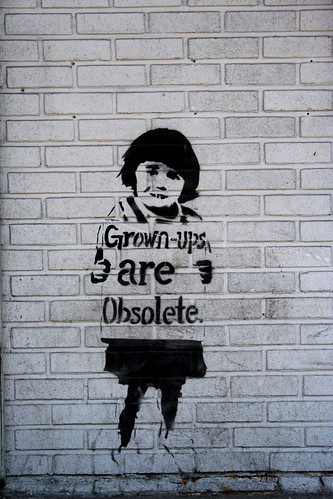I just started messing around with a product called SugarCRM which is an open source sales contact management tool much like Salesforce.com.
 They’ve done a really clever thing which is to build a revenue model around the added services rather than try to charge for the core software. You can download the same app that everyone else uses and install it yourself for free. But if you’re not up to the installation challenge, you can let them host it for you and get started in about 5 minutes for a $40/month usage fee. They charge more for additional services that larger groups may require.
They’ve done a really clever thing which is to build a revenue model around the added services rather than try to charge for the core software. You can download the same app that everyone else uses and install it yourself for free. But if you’re not up to the installation challenge, you can let them host it for you and get started in about 5 minutes for a $40/month usage fee. They charge more for additional services that larger groups may require.
I simultaneously started playing with the Salesforce.com free 30 day trial so that I could compare products. But I quickly realized that my learning curve for operationalizing any CRM system as part of my business was much more than 30 days. I also realized that I wanted the ability to do some major customizations which most likely need to happen at the code level. And I figured a Salesforce.com rep was going to call me and start selling to me which seemed like a fair price to pay but one I could actually do without. In fact, I got a call within 24 hours.
I wouldn’t have considered any of these issues as requirements except for the fact that they are available to me. I downloaded the SugarCRM software, installed it, configured it and uploaded a bunch of data in one afternoon. I now have a view into my customer pipeline that is going to simplify both strategic decisions as well as synthesize the variety of conversations happening across the business.
Now, I’m sure that Salesforce.com is more robust and that they have a lot of services and data integration methods I can’t get with SugarCRM. It must work better for larger organizations. I’m sure that Salesforce.com is more reliable, has fewer bugs, has more 3rd party developer tools, etc. At InfoWorld I learned that the cost of open source software becomes time and customization work which is sometimes more expensive than paying service fees (Aug. 2002, April 2006).
The San Francisco Chronicle noted this week that Salesforce.com is in a strong position with its model:
“A growing number of small businesses already realize that, despite recent problems, on-demand software makes more sense than setting up your own computer network.”
A sales manager at Salesforce.com informed me that he has never personally had to sell against SugarCRM in any of his calls. The market for it is probably pretty small.
However I just can’t help but I wonder if SugarCRM is in a position to do to Salesforce.com what Salesforce.com once did to Siebel, undercutting on price and extending efficiencies further out to the edge. The edge used to be self-serve style software as a service. SugarCRM went further and took the edge all the way out to the open source community.
A CRM app isn’t core to running my business. I can do what I need with spreadsheets. But if this tool makes my life easier or allows me to spread intelligence further or faster or if I’m able to make decisions I couldn’t otherwise visualize in my head, and I suspect it might, then I will definitely invest more heavily in it. At that point I may be calling on SugarCRM for additional services.
This software model also has the nice effect of helping me drive myself through the customer marketing funnel at my own pace. At the end of it, I won’t mind paying them for their services, and, in fact, I might be asking to pay for them. What sales person wouldn’t rather receive calls than make them?
Of course, the moment I need services that are worth paying for, I may need to switch to Salesforce.com. SugarCRM is banking on the possibility that I’ll reach user lock in before I get to that point. If I have to make that decision, then it means things are going well. And for that, SugarCRM will already have “loyalty” checked off in their column of my product comparison chart.











